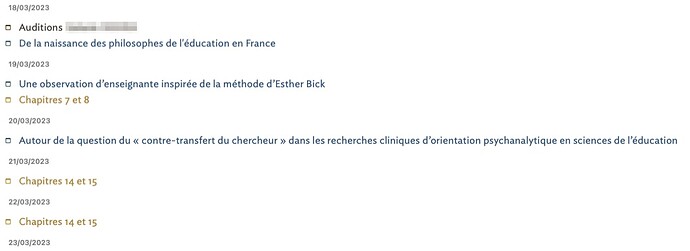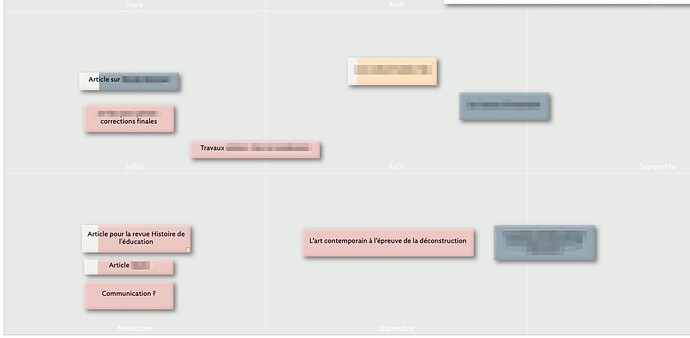My life and activities have changed significantly over the past year, and this has accelerated in the last three or four months, and I am now looking at spending the last few years before I become completely senile in working as a counsellor/psychotherapist, both for a charity and in private practice.
It has dawned on me that there is a lot to keep track of: appointments, notes (confidential) regarding sessions, client contact details (also confidential), logs of hours I have worked, records of bills (sent, paid, unpaid, etc.), logs of Continuing Professional Development (CPD), logs of supervision hours (and what was discussed) … etc, etc. (Until now, some of this has been handled by the charity for which I volunteer, but I will have to do it all myself when I start working privately.)
Although there are software packages that will handle all this sort of admin (e.g. https://counsel360.co.uk/, https://www.wearekiku.com/) it seems to me that I could do what I need in Tinderbox.
I may be wrong about that, and I may eventually opt for a ready-made package, but there is something else that inclines me to at least give it a try in Tinderbox. It is this: the main “tool” that one uses in psychotherapy is one’s “self” – one’s physical presence, one’s psychological being, one’s accumulated experience, one’s feelings, thoughts, ideas, and the ability to communicate them. There are powerful reasons why “self-care” constitutes an important aspect of working as a counsellor/psychotherapist. Keeping clear boundaries between work and the rest of life is important in this sort of work, but my own personal view is that some blurring is inevitable. (As an example of this, a friend of mine was recently audited by the British Association for Counselling and Psychotherapy [BACP] and among the things she had to report on was self-care – which for her included gardening and taking walks with the dog. I’m not suggesting ridiculous levels of detail here, just that there might be some point in tracking activities that are not strictly “counselling”.)
In short, the ready-made admin packages are all about admin – just bills and appointments, etc. But Tinderbox would, I think, permit me to keep track of so much more, and also offer the possibility of linking it all together, and analysing it (don’t ask me how, at this point!).
I’m merely thinking out loud at the moment, but I’m interested to know how more experienced Tinderboxers might react to such a task or project. I’m about to find a piece of paper to try to map out what it might look like, or at least what the initial building blocks might be. This is still all very vague at the moment. But I’m wondering if the core of this is going to be some sort of journal recording what was done every day, with links to appointments and various activities. Not sure yet.
Apologies for the wall of text.

